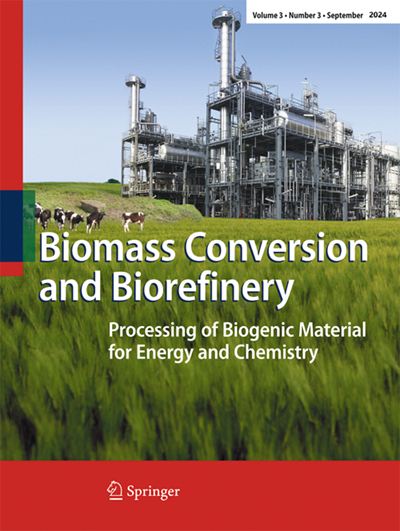Cypress cones solid waste derived biochar for efficient uptake of paracetamol from synthetic wastewater: characterization, kinetic, isotherm, and thermodynamic studies
Abstract
This paper explores the production of a cost-effective adsorbent material from the biomass of cypress cones (abbreviated as CC). The cypress cones biochar (abbreviated as CCB-650) is manufactured easily through one stage of carbonization of (CC) at 650 °C. Comprehensive characterization was conducted using Brunauer–Emmett–Teller (BET), scanning electron microscopy analysis (SEM), Fourier transform infrared spectroscopy (FTIR), X-ray diffraction (XRD), and pH point of zero charge. Characterization of CCB-650 led to the result of an amorphous carbon structure with a porous and large surface area reaching 365.57 m2/g in order to adsorb paracetamol molecules (abbreviated as PCM). Batch experiments and theoretical calculations were carried out to examine the adsorption of paracetamol from aqueous medium onto CCB-650. The adsorption of PCM on CCB-650 achieves up to 97% efficiency under ambient conditions. According to the Langmuir model, the maximum adsorption capacity obtained was 59.865 mg/g. The results show that adsorption occurs on a surface of CCB-650 biochar according to the Freundlich isotherm and pseudo-second-order model. The pore diffusion, π–π interactions, and hydrophobic interactions might be the dominant mechanisms responsible for this adsorption process. This study highlights the successful valorization of cypress cones (CC) as a waste with no commercial value into an adsorbent material capable of treating effluents containing medicinal chemicals.
Graphical abstract

 求助内容:
求助内容: 应助结果提醒方式:
应助结果提醒方式:


